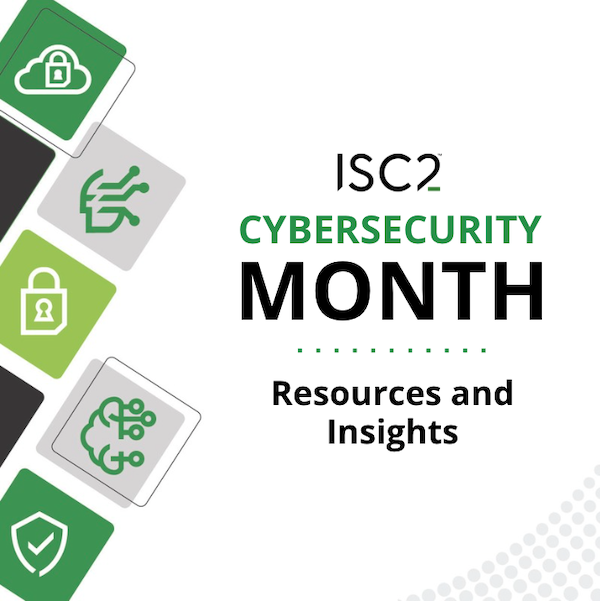Surendra Vitla, CC, has experienced how organizations – large and small – have come to rely more heavily on technology to drive their operations. From managing customer data to handling financial transactions, these digital systems are essential. However, as he explains, with every new application and service comes a new set of risks.

Disclaimer: The views and opinions expressed in this article belong solely to the author and do not necessarily reflect those of ISC2.
Keeping digital systems secure from cyber threats has become just as important as locking the doors to a physical organization. But how does one ensure that my systems are well-protected when the landscape of cyber threats is always changing?
One tool that I have found to be incredibly effective is real-time vulnerability detection and anomaly reporting. This tool constantly monitors my systems, detects weaknesses and alerts my team immediately through an intuitive dashboard. It's like having a security guard for my digital operations, ensuring that everything is running smoothly and proactively guarding against potential threats.
What is Real-Time Monitoring?
Real-time monitoring, in simple terms, is all about keeping a vigilant eye on applications for anything out of the ordinary. As an organization grows and becomes more dependent on digital systems, those systems become increasingly complex. This complexity makes it harder to spot problems early on. Vulnerabilities – such as outdated software, coding errors or weak security measures – can easily slip through unnoticed.
In my experience, real-time monitoring tools automatically scan these systems for potential issues, flagging risks as soon as they’re detected. This gives me the opportunity to address problems before they escalate into major threats that could harm operations or reputation.
How Does it Work?
These tools use sophisticated technology to identify two main types of issues: vulnerabilities and anomalies.
- Detecting Vulnerabilities: Think of this like an outdated lock on a door. If the lock is weak, it's an easy entry point for intruders. In the same way, outdated or poorly configured software can leave my digital systems vulnerable to attack. The real-time monitoring tools I use constantly check for known vulnerabilities, such as old security features or faulty coding practices. When an issue is found, an alert is sent, allowing me to fix it before any damage occurs.
- Identifying Unusual Activity (Anomalies): Not all security threats are as obvious as a broken lock. Some problems begin with small signs of unusual behavior. I’ve experienced cases where an employee's account started making odd requests, or my website saw a sudden spike in traffic – both of which could have been indicators of a cyberattack or data breach. Anomaly detection works by learning what “normal” activity looks like for my system. If something unusual happens, the tool immediately sends an alert, allowing me to catch potential issues early.
The Power of Dashboards
While my IT team or security staff are experts in identifying and fixing issues, senior management often needs to understand what’s happening in a straightforward, easily digestible format. That’s where dashboards become invaluable. These visual tools take complex data and turn it into clear, actionable insights.
In short, dashboards deliver simple, actionable information for decision-makers. They offer several key features:
- Risk Scores: Color-coded indicators show the severity of issues – green for low risk, red for high risk.
- Trends: Visual timelines track whether problems are worsening over time.
- Real-Time Alerts: Immediate notifications for any situation that requires urgent attention.
- Customizable Views: Dashboards allow my team to focus on the most relevant information, like tracking specific vulnerabilities or applications.
Why This Matters for Organizations
After using real-time monitoring tools, I’ve seen how they can make a significant difference in an organization’s ability to stay secure. Here are some of the key benefits I’ve experienced:
- Quick Response to Threats: The quicker I can identify a potential security issue, the easier it is to contain and resolve. With real-time monitoring, I receive instant alerts whenever something unusual is detected – whether it’s a weak point in the system or unusual behavior in an employee’s account. This prompt response helps stop small issues from growing into major problems.
- Helping Leaders Make Informed Decisions: IT professionals may know all the technical details, but for senior management it’s crucial to have clear, actionable information. I’ve found that dashboards help bridge this gap, giving leaders a straightforward view of the situation and helping them make informed decisions without needing to dive into complex technical specifics.
- Reducing the Risk of Security Breaches. I’ve seen how a single security breach can be disastrous, especially when sensitive customer data or financial transactions are at stake. Real-time monitoring tools help minimize the risk of these breaches by detecting vulnerabilities early, preventing potential damage before it occurs.
- Staying Compliant with Regulations: Certain industries require organizations to meet security standards and regulations. By using real-time monitoring, I can ensure that my organization stays compliant and avoids costly penalties related to security failures or data protection violations.
How Organizations Can Use These Tools
Real-time vulnerability detection tools have proven useful across various industries. Let me share a few examples:
- Financial institutions: In my work with financial institutions like banks and credit unions, real-time monitoring has been essential. These organizations deal with sensitive customer data and the ability to detect vulnerabilities like outdated encryption or weak security protocols helps keep that data secure. The tools also flag anomalies, such as unusual account activity or suspicious transactions, which could indicate fraud.
- E-Commerce Organizations: For e-commerce operations, elements such as transactions, customer accounts and payment systems are integral to what they do. Real-time monitoring helps quickly identify any issues with payment gateways, login failures, or unexpected surges in website traffic. This keeps customer data secure and ensures a smooth online shopping experience.
Challenges to Consider
While real-time monitoring tools are invaluable, there are a few things to keep in mind:
- False Alarms: Sometimes, the system may flag an issue that isn’t really a threat. Over time, the tools can learn to reduce these false alarms, but it’s something to be mindful of.
- Scaling with Growth: As an organization grows, so do its systems. The monitoring tool must be able to scale to keep up with the added complexity without affecting performance.
The Future of Security Monitoring
Real-time vulnerability detection tools are getting smarter. I’m excited to see where they’re headed. The integration of machine learning and AI will likely make these tools even more accurate and responsive to emerging threats. As technology continues to evolve, I can see these tools becoming an even more integral part of my organization’s cybersecurity strategy.
The threats faced by organizations are also evolving. From my experience, using real-time vulnerability detection and anomaly reporting tools has been key to staying ahead of these threats. These tools help me detect potential issues before they escalate, protect sensitive data and empower decision-makers with clear, actionable insights. In an age where cyberattacks are a growing concern, it’s crucial to take proactive steps to safeguard all activities. Real-time monitoring offers a straightforward yet powerful way to do just that.
Are you ready to elevate your organization’s security and stay ahead of digital risks? I recommend exploring how real-time monitoring can protect your operations and give you peace of mind.
Surendra Vitla, CC, has nine years of specialized experience in IAM and cybersecurity. As a lead security consultant in cyber risk, security and governance, he currently leads the design, deployment, and optimization of advanced IAM solutions, overseeing the implementation of robust cybersecurity frameworks, risk mitigation strategies and compliance controls across diverse industries.
Related Insights


